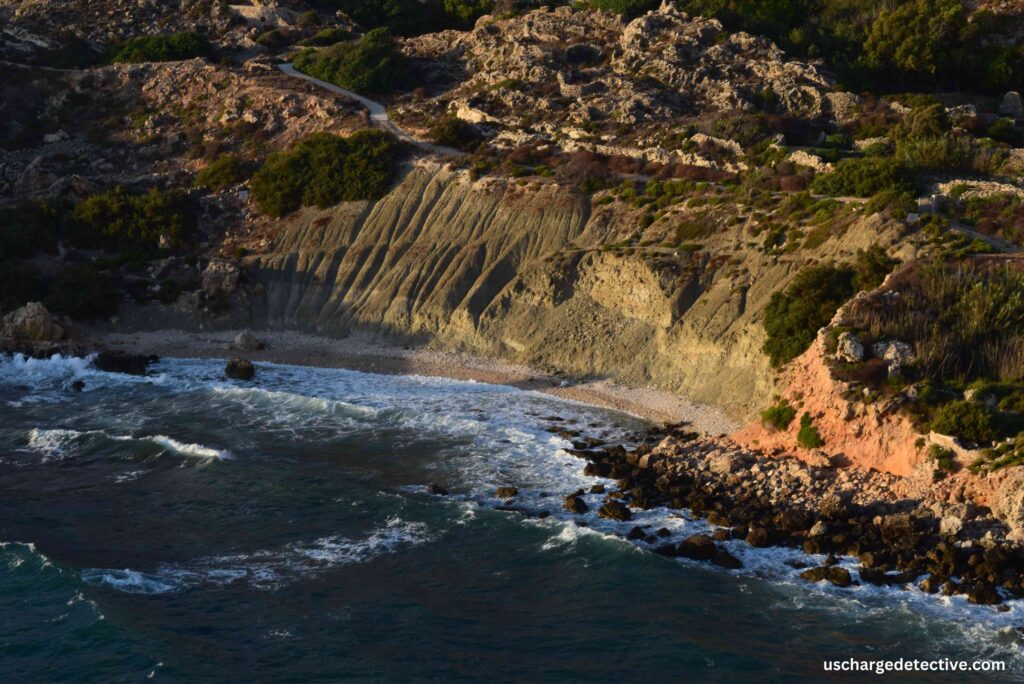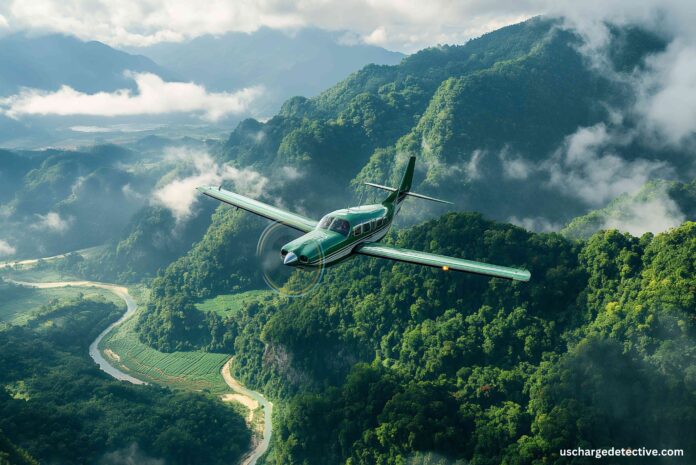Taking a flight from Los Angeles to Seattle is more than just a travel necessity—it’s a breathtaking journey through some of the most stunning landscapes the western United States has to offer. The Seattle flight path from LA mountains provides passengers with a unique view of diverse terrains, from arid deserts to snow-capped peaks, vast forests, and sparkling coastlines. Let’s dive into this magnificent aerial experience and explore what makes this flight so special.
The Magic of the LA Takeoff
Starting your journey in Los Angeles is an exciting experience. As the plane takes off from one of the busiest airports in the world, you’re already anticipating the adventure ahead. Los Angeles International Airport (LAX) offers stunning views of the Pacific Ocean and the sprawling city, but soon enough, the urban landscape fades, making way for rugged mountain ranges.
Flying Over the Los Angeles Mountains
Within minutes of takeoff, you’ll witness the towering San Gabriel Mountains, part of the Transverse Ranges, which encircle the greater Los Angeles basin. These mountains are a mix of steep cliffs, rocky ridges, and densely wooded areas. It’s here that passengers get their first taste of the Seattle flight path from LA mountains, showcasing nature’s grandeur right from the start.
San Bernardino Mountains
To the east, you’ll notice the San Bernardino Mountains, offering some of the best views of high-altitude peaks. If you’re lucky and the weather is clear, you might even catch a glimpse of Mount San Gorgonio, the tallest mountain in Southern California.
Transitioning from Mountains to Deserts
As the plane continues its northward journey, you’ll soon leave behind the towering peaks of the LA area and transition into the sprawling Mojave Desert. This drastic change in scenery offers a stark contrast—golden-brown desert terrain, winding valleys, and a sea of brushland. The desert stretches seem endless, reminding passengers of the vast, untamed beauty of the American West.
The Mojave Desert’s Serenity
The Mojave Desert is home to iconic features like Joshua Trees and desolate salt flats. From above, these natural wonders look like specks on the earth, but they offer an entirely different beauty compared to the lush greenery you’ll later encounter in the Pacific Northwest.
The California Central Valley: A Patchwork of Agriculture
After flying over the deserts, the landscape changes once again, this time into one of the most agriculturally productive regions in the world—the California Central Valley. This region is often described as the “breadbasket of the world,” and from above, it looks like a giant patchwork quilt made up of farms, orchards, and vineyards.
A Rich Agricultural Mosaic
Spanning over 450 miles, the Central Valley is a contrast of greens, browns, and yellows, depending on the season. You might notice irrigation canals running through the fields, providing life to the crops that feed millions of people.
Sierra Nevada: A Natural Wonder from the Sky
As the plane begins to climb higher, passengers are treated to the awe-inspiring views of the Sierra Nevada mountain range. These snow-capped peaks, particularly in winter, are breathtaking from 30,000 feet in the air. Mount Whitney, the tallest peak in the contiguous United States, is often visible on a clear day.
Kings Canyon and Yosemite
If you’re lucky and your flight path passes slightly east, you may be able to catch glimpses of Kings Canyon and Yosemite National Park. From the sky, the iconic granite cliffs of El Capitan and the towering Half Dome can sometimes be spotted.
The Scenic Pacific Coastline Approach

As the flight continues, many planes choose a path that skirts the Pacific Coast. From here, you’ll see stunning cliffs plunging into the ocean, waves crashing along the shore, and expansive beaches stretching for miles.
Monterey Bay and the Big Sur Coastline
The views over Monterey Bay and the Big Sur coastline are among the most picturesque on the West Coast. The dramatic cliffs, winding roads, and sparkling blue waters are a testament to the raw beauty of California’s coastline.
Cascading into the Cascade Range
As the flight nears Washington State, the majestic Cascade Range comes into view. This volcanic mountain range stretches from British Columbia down into Northern California, with its most iconic peaks rising up like sentinels guarding the Pacific Northwest.
Mount Shasta and Mount St. Helens
Among the highlights of the Cascade Range are the volcanic peaks of Mount Shasta and Mount St. Helens. These towering mountains dominate the landscape, their snow-covered summits contrasting sharply against the surrounding forests.
Mount Rainier: The Crown Jewel of the Journey
One of the final highlights of this flight is the approach to Mount Rainier, the highest mountain in Washington and one of the most prominent in the contiguous United States. Its glacier-clad peak is a sight to behold, often rising above the clouds like a majestic giant.
A Symbol of Seattle
As the plane descends into Seattle, Mount Rainier serves as a dramatic backdrop to the city’s skyline, making it the perfect symbol of the natural beauty that surrounds the Emerald City.
Arrival in Seattle: Emerald City from Above
Your journey ends with an aerial view of Seattle, often referred to as the Emerald City due to its lush greenery. The sight of the iconic Space Needle, with the shimmering waters of Puget Sound and the vast expanse of Evergreen forests, signals your arrival in one of the most beautiful cities in the U.S.
Best Times to Take the Flight for Optimal Views
While the Seattle flight path from LA mountains is stunning year-round, there are certain times of the year when the views are particularly breathtaking. Winter offers the best views of snow-capped peaks, while summer provides clearer skies and more vibrant colors.
Wildlife and Landmarks to Spot Along the Way
From soaring eagles over the mountains to seals along the Pacific Coast, there’s plenty of wildlife to spot during the flight. Landmarks like Yosemite and the Golden Gate Bridge are also visible on certain routes.
How to Maximize the Scenic Experience on the Flight
To truly appreciate the beauty of the Seattle flight path from LA mountains, it’s important to plan ahead. Booking a window seat on the right side of the plane offers the best views of the coastline, while the left side may give you better mountain vistas.
The Importance of Seat Selection for the Best Views
When booking your flight, consider choosing a seat based on what you hope to see. The right side of the plane offers views of the Pacific Coast and Mount Rainier, while the left side provides glimpses of the Sierra Nevada and Cascades.
FAQs
1. What is the best side to sit on for views during the Seattle flight path from LA mountains?
For the best views of the Pacific Coast and Mount Rainier, sit on the right side. For views of the Sierra Nevada and Cascades, sit on the left.
2. How long is the flight from Los Angeles to Seattle?
The average flight duration is about 2.5 hours, depending on weather conditions and flight path.
3. Can you see Mount Rainier from the plane on the way to Seattle?
Yes, Mount Rainier is often visible during the approach into Seattle, especially on clear days.
4. What landmarks can you spot during the flight?
You may see landmarks such as the Sierra Nevada, Yosemite National Park, Mount Shasta, Mount St. Helens, and the Pacific coastline.
5. What is the best time of year to take this flight for scenic views?
Winter provides the most dramatic snow-covered peaks, while summer offers clearer skies and vibrant landscapes.
Conclusion
The Seattle flight path from LA mountains offers passengers more than just a journey between two cities. It’s a scenic adventure that highlights the diverse beauty of the western United States, from deserts to mountains and everything in between. As you fly through this natural wonderland, take a moment to appreciate the awe-inspiring landscapes beneath you.
